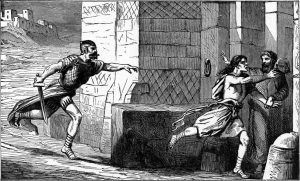The issue of ‘cities of refuge’ appears in the weekly Torah portion:
“Then Moses set apart three cities in the east beyond the Jordan, that the manslayer might flee there, anyone who kills his neighbor unintentionally, without being at enmity with him in time past; he may flee to one of these cities and save his life: Bezer in the wilderness on the tableland for the Reubenites, Ramoth in Gilead for the Gadites, and Golan in Bashan for the Manassites.” (Deuteronomy 4:41-44)

The Hebrew term for ‘cities of refuge’ is ‘Arei Miklat. {ערי מקלט}’ The Hebrew root K-L-T {ק-ל-ט} has multiple meanings and its initial meaning is ‘to absorb’ as can be found in the Modern Hebrew term ‘Misrad Ha-Kelitah’ {משרד הקליטה} which is the ‘Ministry of Aliyah and Immigrant Absorption’ of the State of Israel.
When organized in the Hebrew pattern for nouns which indicate places – such as in our case ‘Miklat’ {מקלט} – it implies that this Hebrew word stands for a place which ‘absorbs’ people or in other words a refuge, shelter or place of asylum.
Interestingly, in ancient Rome, there was a place at the Capitoline Hill in where people who were facing persecution could seek refuge. This place was called ‘Asylum.’
